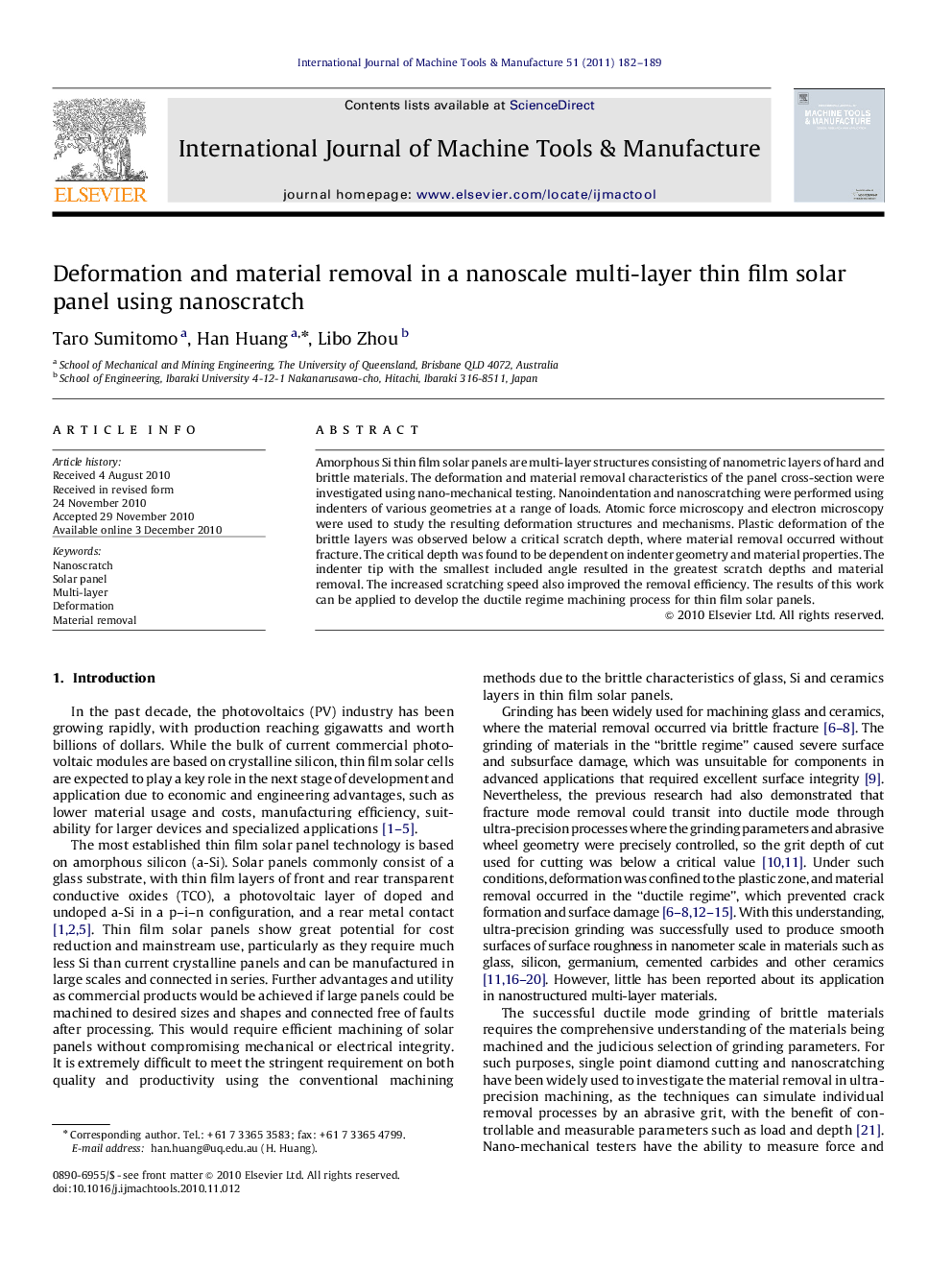| کد مقاله | کد نشریه | سال انتشار | مقاله انگلیسی | نسخه تمام متن |
|---|---|---|---|---|
| 780666 | 1464546 | 2011 | 8 صفحه PDF | دانلود رایگان |

Amorphous Si thin film solar panels are multi-layer structures consisting of nanometric layers of hard and brittle materials. The deformation and material removal characteristics of the panel cross-section were investigated using nano-mechanical testing. Nanoindentation and nanoscratching were performed using indenters of various geometries at a range of loads. Atomic force microscopy and electron microscopy were used to study the resulting deformation structures and mechanisms. Plastic deformation of the brittle layers was observed below a critical scratch depth, where material removal occurred without fracture. The critical depth was found to be dependent on indenter geometry and material properties. The indenter tip with the smallest included angle resulted in the greatest scratch depths and material removal. The increased scratching speed also improved the removal efficiency. The results of this work can be applied to develop the ductile regime machining process for thin film solar panels.
Research highlights
► Nanoscratching was performed on the multi-layered cross-section of a thin film amorphous Si solar panel to study the deformation and material removal mechanisms in a nanostructure made up of very thin layers of materials with very different mechanical properties, from soft metals to brittle ceramics. SEM, TEM and AFM were used to evaluate the deformation structures.
► By using low loads and very fine indenter tips, the scratching depth can be controlled to below a critical depth where the brittle glass and ceramic layers of the solar panel deformed plastically. This resulted in cutting and material removal without fracture and chipping, and without damage to the structure. That is, ductile regime behavior was achieved. Above the critical depth, fracture of the materials and brittle behavior were observed.
► Use of different scratching indenter tips showed that the critical depth was highly dependent on indenter geometry. The tip with the smallest included angle resulted in the highest critical depth.
► The feasibility of ultra-precision machining methods such as nanogrinding on such multi-layer nanostructures was demonstrated. The ability to efficiently machine the delicate cross-sections of nanoscale multi-layer components would be very useful for the next generation of micro-machines and other applications.
► Using our results, we proposed certain parameters, such as load, abrasive geometry and speed, which may be applied in the development of suitable ultra-precision machining techniques.
Journal: International Journal of Machine Tools and Manufacture - Volume 51, Issue 3, March 2011, Pages 182–189